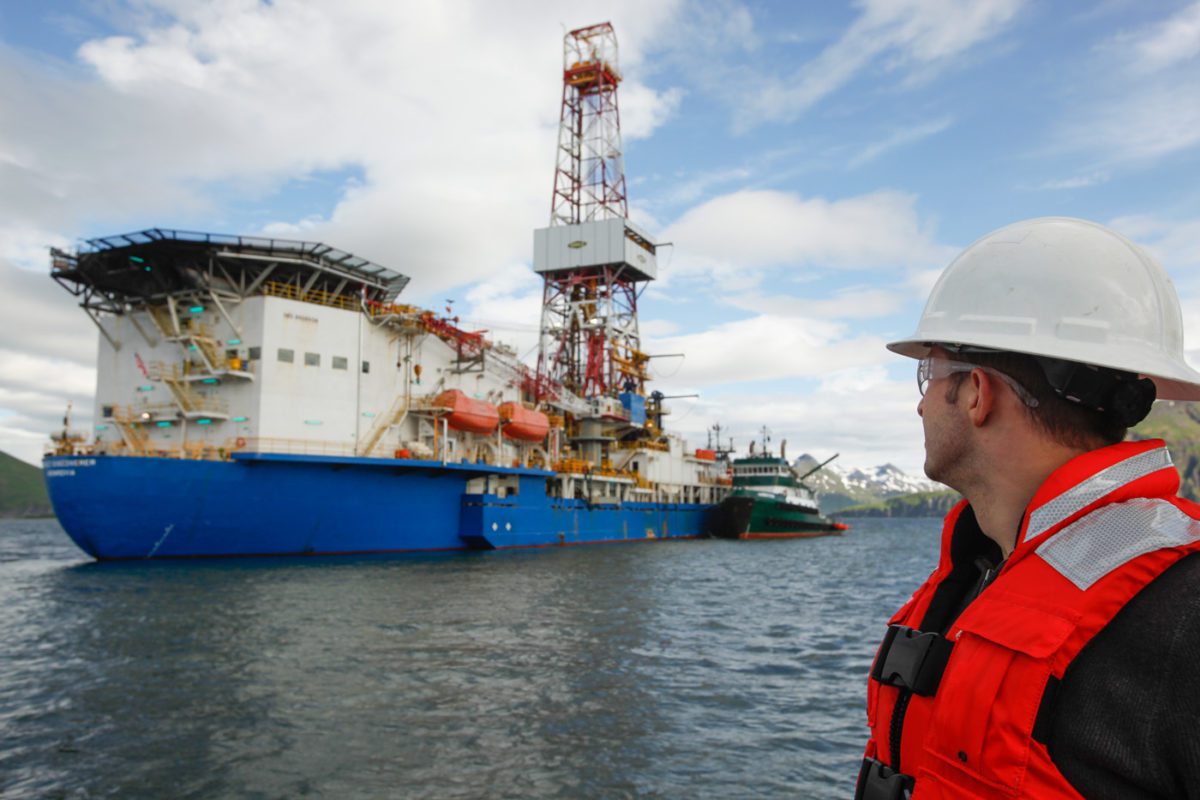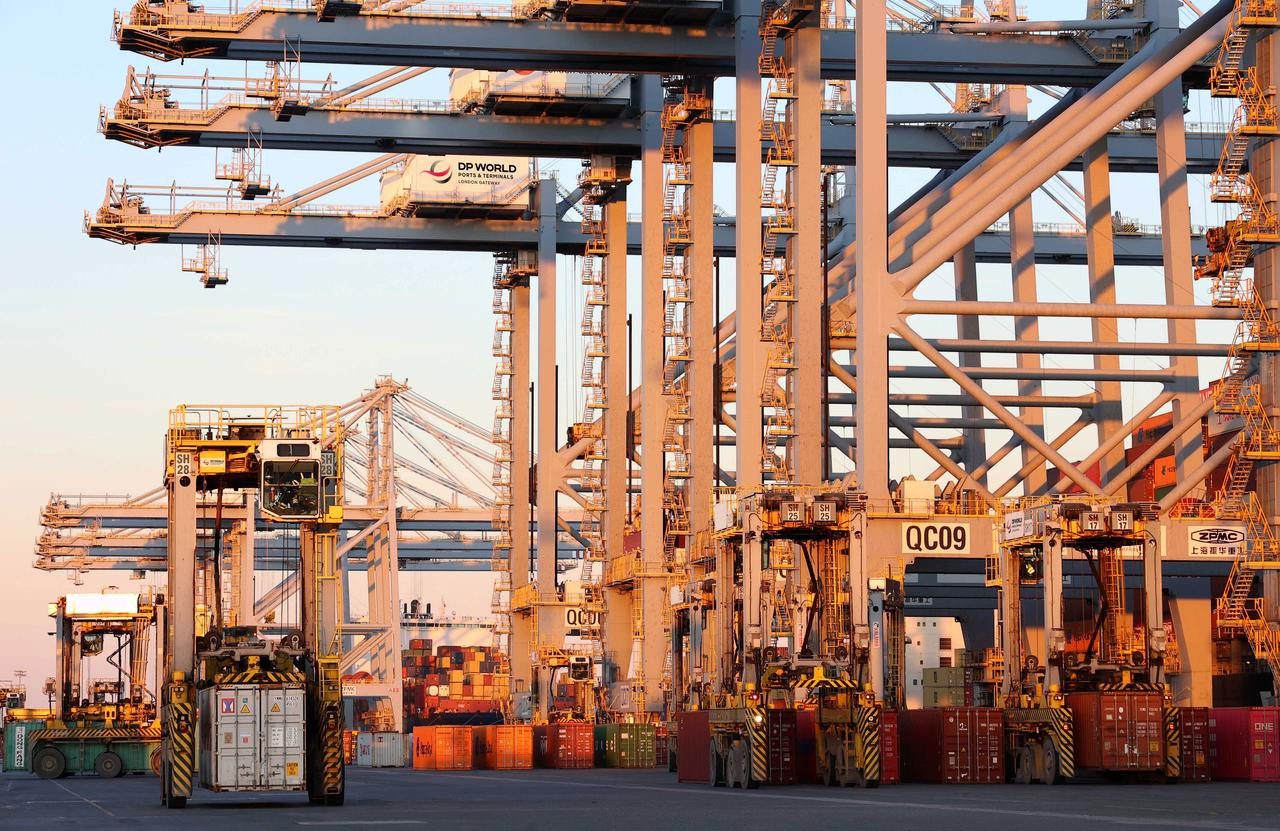The Noble Discoverer drilling rig pictured in Dutch Harbor, Alaska in Summer 2012 while under contract to Shell. Photo: Shell Alaska
By Jennifer A. Dlouhy (Bloomberg) — The Trump administration is proposing to open almost all U.S. coastal waters to oil drilling, including those off California and Florida where activists have fought for decades to spare delicate ecosystems from oil spills.
The proposal released Thursday will go far beyond President Donald Trump’s April order directing the Interior Department to consider auctioning oil and gas leases in the Arctic and Atlantic Oceans as well as the Gulf of Mexico.
Instead, the Interior Department is proposing 47 possible auctions of drilling rights in more than 90 percent of the U.S. outer continental shelf, including Pacific waters near California and Atlantic waters near Maine. The draft plan opens the door to selling leases in 25 of the nation’s 26 offshore planning areas, including 19 auctions of the Alaska region, seven in the Pacific region and nine in the Atlantic, including the straits of Florida.
The plan is unprecedented in its scope; no prior administration has ever proposed so many lease sales in a single five-year offshore drilling program. And the Obama-era plan Trump is aiming to replace forces drillers to focus on the central and western Gulf of Mexico with 10 sales there and one auctioning acreage in Alaska’s Cook Inlet.
The only region the Trump administration is ruling out now is the North Aleutian Planning Area in Alaska, which had been excluded from leasing by former President George W. Bush.
“Under President Trump, we are going to become the strongest energy superpower this world has ever known,” Interior Secretary Ryan Zinke told reporters in a conference call Thursday. “We want to grow our nation’s offshore energy industry, instead of slowly surrendering it to foreign shores. We will produce enough energy to meet our needs at home, and we will export enough energy to lead the world.”
The draft proposal illustrates the Trump administration’s commitment to expanding domestic energy development beyond the Gulf of Mexico. Both Trump and Zinke have celebrated American “energy dominance,” and the president has vowed to unleash the “vast energy wealth” of the U.S.
Environmentalists and coastal residents have fought offshore drilling that they say poses too great a risk of oil spills befouling beaches, harming marine life and jeopardizing tourism.
That kind of opposition helped persuade the Obama administration to jettison its initial Arctic and Atlantic leasing plans. Still, the Trump administration’s broad approach may make it harder for activists to fight now, by forcing them to divide resources and combat proposed drilling off all U.S. coasts — not just in the eastern Gulf, Arctic waters and the Atlantic Ocean where oil companies are believed to be most interested.
“This radical offshore drilling free-for-all is a clear example of politics over people, ignoring widespread local and state opposition,” said Diane Hoskins, a campaign director for the marine conservation group Oceana.
All three governors on the U.S. West Coast oppose expanded offshore drilling, and on the East Coast, more than 140 municipalities have lodged their opposition. The governors of North Carolina and Virginia also expressly asked the Trump administration to leave their states out of any new plan, and Florida’s governor announced his opposition Thursday.
Politicians from Florida united in opposition Thursday, with Senators Bill Nelson and Marco Rubio arguing the government should extend an existing ban on oil development in the eastern Gulf of Mexico set to end in 2022 — not allow new leasing there. Governor Rick Scott asked for an immediate meeting with Zinke to argue against selling leases near the state.
“The administration’s backward-looking approach puts oil and gas profits first — and will place our coastal communities and all they support at risk of the next BP-style disaster,” said Natural Resources Defense Council President Rhea Suh, referring to the 2010 oil spill in the Gulf of Mexico.
The Interior Department’s draft is an initial step in assembling a new five-year schedule for selling offshore oil leases from 2019 to 2024, replacing Obama’s plan that spanned 2017 to 2022. The process often begins broadly, with the number of potential sales and the available acreage generally whittled down as regulators work on the final plan.
For instance, the Obama administration originally proposed selling drilling rights in the Atlantic and Arctic Oceans before ultimately abandoning the idea.
The Trump administration could finalize a sale schedule by the end of the year, after multiple rounds of environmental analysis and public comment.
Zinke emphasized that the draft could be narrowed in response to feedback from the public and politicians.
“Just like with mining, not all areas are appropriate for offshore drilling, and we will take that into consideration in the coming weeks,” Zinke said in a news release. “The important thing is we strike the right balance to protect our coasts and people while still powering America and achieving American energy dominance.”
Oil industry advocates argue companies need fresh territory beyond the Gulf of Mexico, where drilling has been ongoing for decades and the quest for crude has driven them into deeper waters.
National Ocean Industries Association President Randall Luthi called the Trump proposal a “bold and broad” proposal that rightly keeps options on the table.
“Polls have repeatedly shown that most Americans want more energy to be produced domestically, including looking for more oil and natural gas resources off our shores,” Luthi said in a news release. He added that the U.S. has restricted offshore exploration as other countries including Canada and Mexico have stepped up their coastal activities.
It is not clear how much oil and gas exists under Atlantic waters off the East Coast, because existing data stems largely from decades-old geological surveys and more than four-dozen wells drilled in the 1970s and 1980s. Some petroleum geologists examining the location of continents before they drifted apart point to discoveries and development in other parts of the Atlantic Ocean as illustrating potential oil deposits along the U.S. East Coast.
Oil is still being produced from wells off southern California’s coast, even though the government last sold leases in the area in 1984.
© 2018 Bloomberg L.P

 Join The Club
Join The Club











